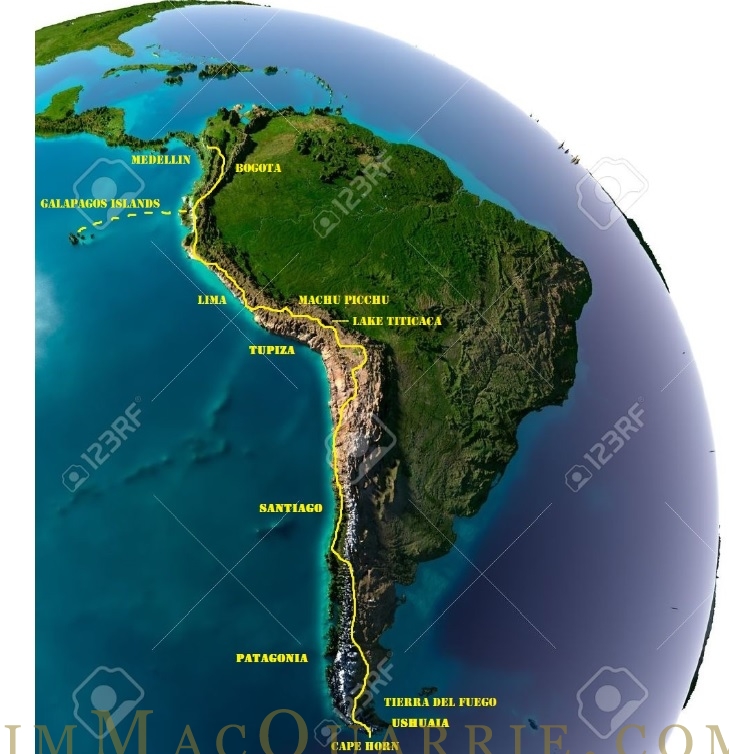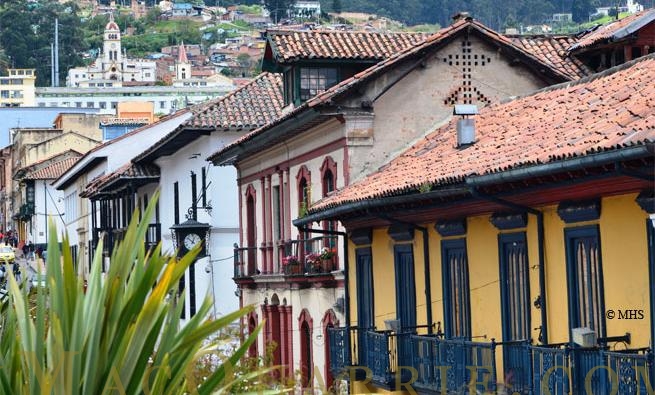Life and Death in the Andes: How an Epic Journey Came About
posted on September 2nd, 2015 in Andes Mountains, Colombia, Life and Death in the Andes (New Book)
Life and Death in the Andes: On the Trail of Bandits, Heroes, and Revolutionaries
The Behind-the-Scenes Story of a 4,500-mile Journey Down the Andes and the Book that Came From it
Entry from my travel journal:
Bogotá, Colombia
At the Centro García Márquez, which is near the La Casa de Moneda and the Botero Museum in Bogotá, Colombia, there’s a large bookstore, built on a circular plan, and a café on the corner. I’m seated at a table in front of the café, the wind rustling the pages of my journal, low gray clouds scudding overhead. Bogotá is a city of red brick and gray buildings, with a knife-like, dark green thrust of the Andes emerging from one side, looming over the city. Hopefully, the weather holds as tomorrow I’m planning on visiting Lake Guatavita, about 40 miles northwest of the city, where the legend of El Dorado comes from.
Yesterday I met and interviewed retired general Hugo Martínez, who a little over twenty years ago brought down the drug czar, Pablo Escobar. The general arrived for the interview at 3:45 P.M., wearing a dark blue suit and slacks, hair still dark black with streaks of gray, six feet tall, lean, a mole on his left cheek, eyes close set like those of my grandfather, but friendly, enthusiastic, not like his portrayal by Mark Bowden in “Killing Pablo.” The general said that he has read my most recent book, “The Last Days of the Incas,” in Spanish, and had liked it. He’d been to Machu Picchu twice, he said, the last time with his family and had driven there from Bogotá. He was going to go again and hike the Inca Trail, with another retired Colombian general, but at the last minute his friend had been appointed to some government post which, in the end, hadn’t gone too well (“Salió mal,” he said, shaking his head).
The general talked non-stop from 3:45 PM until around 7:00 P.M., pausing only to take a sip of water. Although I had questions prepped for the interview, I somehow never used them, as the general tended to launch into entire, rather spell-binding stories, myself interrupting only occasionally to guide him back to points I was interested in, or wanting to make sure that I understood. The red light on my small digital recorder glowed the entire time. The general’s story of tracking down and locating Pablo Escobar was more involved and suspenseful than I had originally read, and now I was hearing it in the first person. Martínez explained how his son had been the one to locate Escobar’s safe house, was only 23 at the time, and that it was a fluke that he had happened to be in the vicinity and was the officer who had ultimately tracked Escobar down. The general told me that he never talked about these things, that he never talks about Escobar to anyone, not even to his family. But he had liked my book, so he had agreed to meet with me. Tomorrow, I’m leaving for Medellin, where I hope to retrace some of the general’s and Escobar’s paths, and where I also hope to meet Escobar’s brother, Roberto, free now after more than a decade in prison.
**
Next up: Putting the book idea together

Life and Death in the Andes Travel Route

